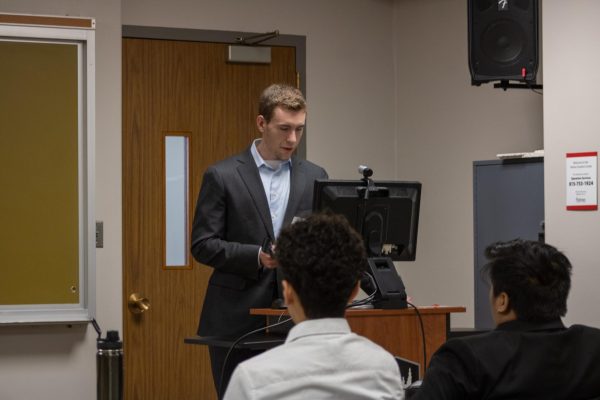Cambodian culture displayed at art exhibit
April 7, 2009
While Cambodia was under Khmer Rouge control from 1975 to 1979, 80 to 90 percent of Cambodian artists died. Some of what the surviving artists did to rebuild Cambodian culture is on display at the NIU Anthropology Museum in an exhibit called “Khmer Spirit: Arts and Culture of Cambodia.”
Included in it are Cambodian canvas drawings, stone carvings and musical instruments. The exhibition coincides with NIU’s celebration of Asian American heritage this month.
“Khmer Spirit” is the second of two Cambodian exhibitions shown at the Anthropology Museum, said Vadim Olshansky, museum attendant and senior anthropology major. The first one focused on the day-to-day life of Cambodians and featured instruments used for silk weaving and rice shucking.
“This is more focused on ritual and belief and the spirit, art and culture,” Olshanksy said of the current exhibition.
The artwork comes from the time period after the Khmer Rouge tried to, in essence, destroy Cambodian culture, as they burned manuscripts and killed master craftsmen. But after the Rouge’s oppressive reign ended, the surviving artists, who included painters, monks and dancers, worked to rebuild that culture. Their work is on display here.
A good part of the exhibit focuses on the story of the Reamker, which is the Cambodian version of the Hindu epic, the Ramayana. According to the exhibit, it’s the most influential epic poem of India and one of the most popular narratives in human history.
“It’s like ‘The Illiad’ is for us Westerners: It forms much of our ideas about myths and legends,” said anthropology museum director Ann Wright-Parsons.
The exhibition features Cambodian musical instruments such as a Sampho (a drum), Tro Thum (a large fiddle) and Takhe (a Khmer guitar).
In a stone carving in the middle of the exhibition entitled Touphy and Pealy (Battle of the Water Buffalo and the Monkey), Pealy, a monkey who is the destroyer of evil, is stabbing Touphy, a water buffalo who represents evil, through the chest.
“Khmer Spirit” runs until May, Olshansky said. It is open from 9 a.m. to 5 p.m. Monday through Friday.












